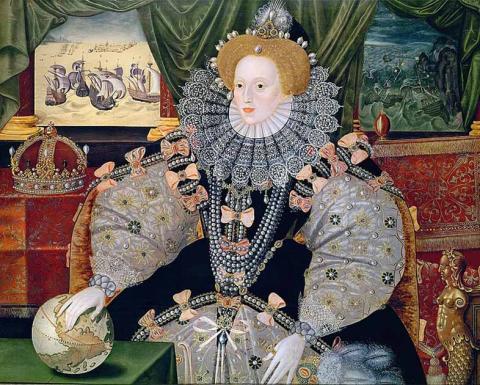Queen Elizabeth I was one of the most successful and celebrated queens in British history. The daughter of Henry VIII and Anne Boleyn, she came to the throne on November 17, 1558, following the death of her older half-sister, Mary I. While Elizabeth's reign is widely recognized for ushering in a golden age, she herself has also been remembered for her iconic fashion choices and style. Her style choices, particularly in clothing, carried deep symbolic significance and helped shape her image as the legendary "Virgin Queen." But could it be that her distinctive makeup, so closely associated with her image, was the very thing that killed her?

The Significance of Elizabeth I’s Style
Queen Elizabeth I's wardrobe was an expression of her authority and political acumen. She strategically used fashion to establish her reign as a symbol of stability, power, and regal elegance. Her iconic dresses, often made of luxurious fabrics such as velvet and silk, were adorned with elaborate embroidery, exquisite embellishments, and intricate lacework. These opulent ensembles served as a visual representation of her wealth, taste, and sovereignty.

Furthermore, the Queen's clothing style also played a crucial role in fostering a sense of national identity. She revived traditional Tudor designs while incorporating elements of Renaissance fashion, creating a unique fusion that became synonymous with her era. Her vibrant and sumptuous garments, featuring bold colors, intricate patterns, and high collars, embodied the spirit of the Elizabethan age and represented England's cultural and artistic renaissance.
Beyond their aesthetic allure, Queen Elizabeth I's wardrobe choices were laden with symbolism. She strategically employed specific colors and motifs to communicate messages and assert her authority. The iconic use of crimson, gold, and silver in her attire symbolized royalty, while the inclusion of Tudor roses and her personal emblem, the Tudor Rose and Crown, reinforced her legitimacy as the rightful ruler.
A Queen’s Poisonous Cosmetics
Regarding her cosmetic choices, Elizabeth relied on minimal makeup in her youth; however, after enduring a battle with smallpox, she gradually began applying more makeup, ultimately creating what is now regarded as her iconic look. During the Elizabethan era, the English upper class considered white, pale skin to be incredibly beautiful. Luckily for her, in the 16th century there was a widely popular makeup product available known as Venetian Ceruse. This coveted cosmetic, highly esteemed by the European aristocracy, was known for its quality and was frequently employed to camouflage scars. Made with vinegar and white lead sourced from Venice, it bestowed women with a fashionable pale complexion. The lead within Venetian Ceruse, however, was poisonous, causing hair loss and skin fading over time, two things Elizabeth suffered from as she got older.
To make matters worse, Elizabeth achieved her iconic red lips by employing cinnabar, a mineral known to contain mercury. Mercury poisoning can cause memory loss, depression, or, in extreme cases, death. Regrettably, Elizabeth's hair loss prompted her to adopt wigs, and the wig itself was further colored with red dye infused with additional mercury. Consequently, it comes as no surprise that towards the end of her life reports surfaced of her grappling with profound melancholy.

Find out more about Queen Elizabeth I and her iconic style in the article ‘Was Queen Elizabeth I Killed by her Poisonous White Makeup?’available in the July - August 2023 issue of Ancient Origins Magazine. Get it here!
Featured Image: The Armada portrait of Elizabeth I, c. 1588. Source: Public domain
By Mark Brophy




